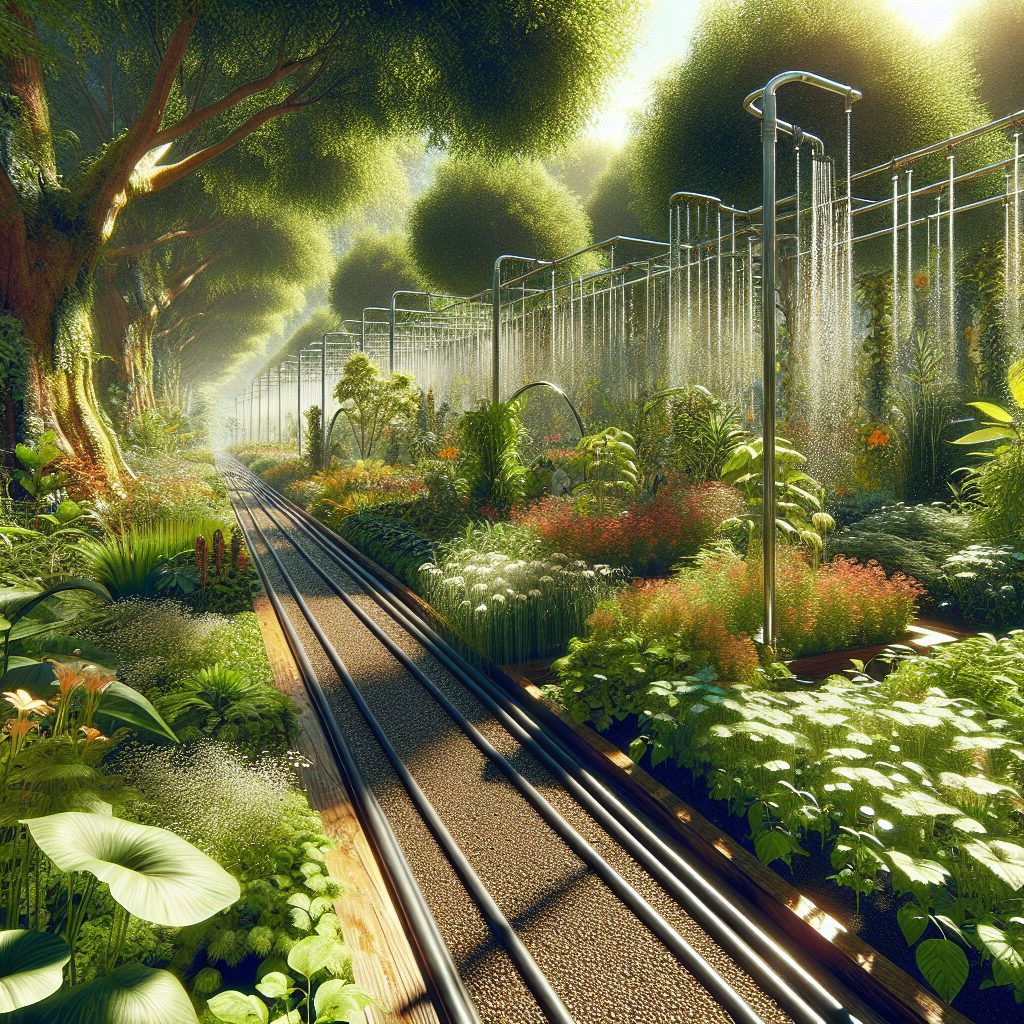Creating a Sustainable Garden with Slow Drip Irrigation
Gardening is a rewarding hobby that allows individuals to connect with nature, grow their own food, and beautify their surroundings. However, traditional watering methods can be wasteful and unsustainable, leading to high water usage and potential harm to the environment. In recent years, more gardeners have been turning to slow drip irrigation as a sustainable alternative that conserves water and promotes healthier plant growth.
What is Slow Drip Irrigation?
Slow drip irrigation is a method of watering plants in which water is delivered directly to the roots at a slow rate. This differs from traditional watering methods such as overhead sprinklers or hand watering, which can lead to water wastage through evaporation and runoff. With slow drip irrigation, water is applied slowly and evenly over an extended period of time, allowing plants to efficiently absorb the moisture they need while minimizing waste.
There are several benefits to using slow drip irrigation in the garden. One of the primary advantages is water conservation. By delivering water directly to the roots of plants, slow drip irrigation reduces evaporation and runoff, leading to significant water savings compared to traditional watering methods. This not only helps conserve precious resources but also reduces water bills for gardeners.
In addition to saving water, slow drip irrigation can also improve plant health and growth. By delivering water directly to the roots at a controlled rate, plants receive consistent moisture levels that promote strong root development and reduce stress from fluctuating soil moisture levels. This can lead to healthier plants that are more resilient against pests, diseases, and adverse weather conditions.
Another benefit of slow drip irrigation is its versatility and adaptability to different garden sizes and layouts. Whether you have a small urban garden or a large backyard oasis, slow drip irrigation systems can be customized to suit your needs. They can be easily scaled up or down depending on the size of your garden and the types of plants you are growing.
How to Create a Sustainable Garden with Slow Drip Irrigation
To create a sustainable garden with slow drip irrigation, there are several steps you can take:
1. Assess Your Water Needs: Before installing a slow drip irrigation system in your garden, assess your water needs based on the types of plants you are growing, soil type, climate conditions, and size of your garden. This will help determine the appropriate amount of water required for optimal plant growth and health.
2. Plan Your Irrigation System: Once you have determined your water needs, plan out your slow drip irrigation system by considering factors such as layout, spacing of emitters or tubing, water pressure requirements, and accessibility for maintenance. If you are unsure about how to design an efficient system for your garden, seek advice from gardening experts or professional landscapers.
3. Choose Quality Equipment: Invest in high-quality equipment such as emitters, tubing, connectors, filters, timers, and pressure regulators for your slow drip irrigation system. Choose materials that are durable and resistant to UV rays and weathering for long-lasting performance.
4. Install Your System: Install your slow drip irrigation system carefully following manufacturer instructions or seek professional help if needed. Position emitters close to the root zone of plants for efficient watering while minimizing wastage.
5. Monitor Your System: Regularly monitor your slow drip irrigation system for leaks, clogs or malfunctions that may affect its performance. Adjust watering schedules based on seasonal changes in weather conditions or plant growth requirements.
6. Maintain Your System: Proper maintenance is essential for ensuring the longevity and efficiency of your slow drip irrigation system. Clean filters regularly to prevent clogs due to debris buildup or algae growth in tubing; replace damaged parts promptly; winterize your system before freezing temperatures arrive by draining excess water from tubing or storing it indoors; perform regular inspections throughout the year for any signs of wear or damage.
7.Water-Saving Tips: In addition to using slow drip irrigation in your garden,
there are other ways you can save
water
and promote sustainability such as capturing rainwater in barrels
to use during dry periods;
mulching around plant
bases
to retain soil moisture;
planting drought-tolerant species suited
to
your climate;
using compost as a soil amendment
to improve wa-
ter retention;
and avoiding overwatering by using moisture meters tO monitor soil moistuNd avoid unnecessaOlewatin g
Conclusion
Slow sri* i___lion off** 3 sus_a._IO la oe option Ior *ri,g*0n_garOens.Ws,e+olarDpsi**ljTpPYantl)+!P*er)ityiod torthe envIronrnentIbY CtinservIngwater,promotInghealtKierPlantgrowtr ,0od reCucinag^t*sienoiCosts-aiso offers Se-versa^itvand adaptability-to-differen^_Iyouts_a*d_sizpsof-garderEiI’,nrg-aSustainablegardenWithSlow_drip_irrigationInvoiYes
assess_igyoUrWater-needs.creaiingan
irrigaTidnSysternChoOSingsuityr
_
_
rCpmenttnStRflfiiourSystemyoumaintain.yOUrSystUn-Water-tilgTipsanayortherWaysYOWcanSaVeWater&Pron|Ote sustahiabilityin…gardbn.by implementingw3t&onsefforts AUowingthese-best-practiceswi5lFGelpyoucreate.ascistainaWegardeiithaWSlow_dfiP_irrigatibnatpromoteswater-conservationapdhealthyplantgr0wthforYEars-tocome














